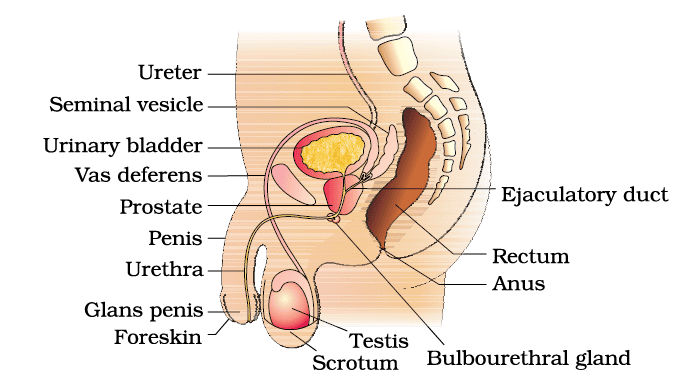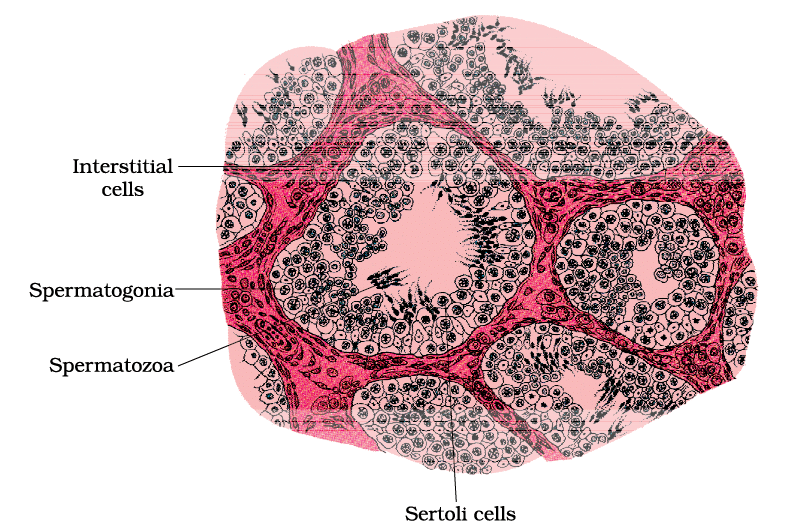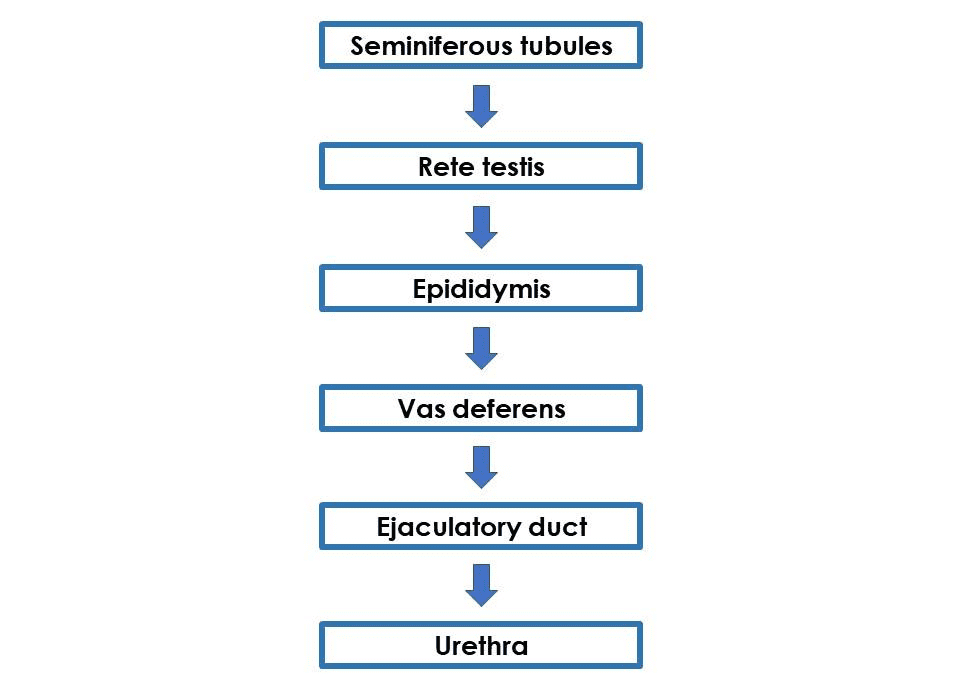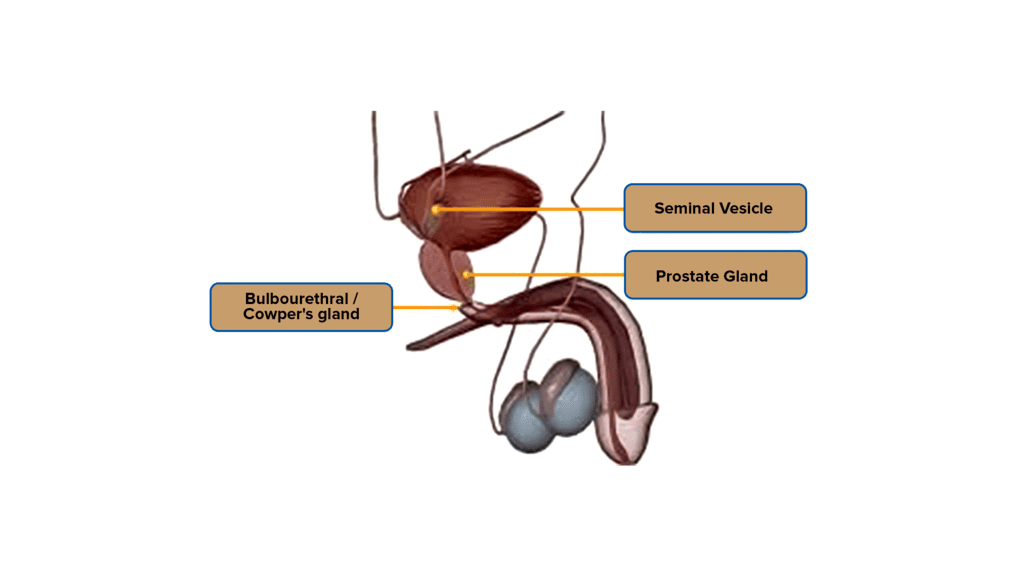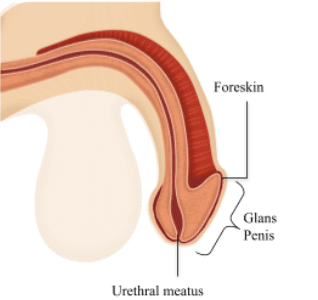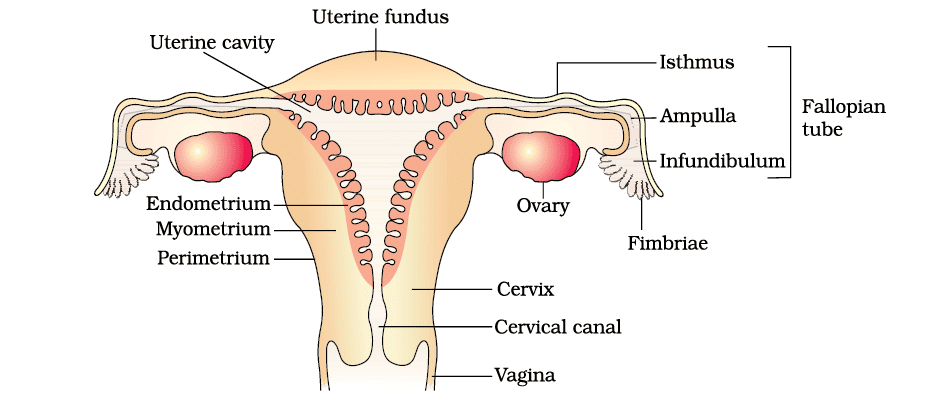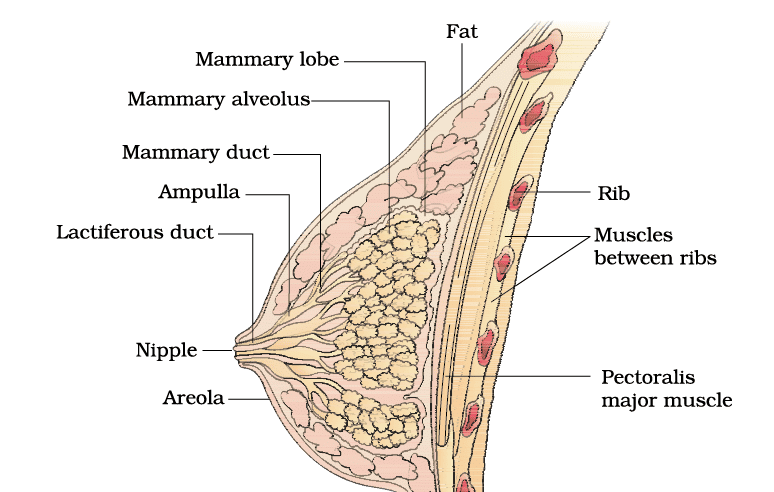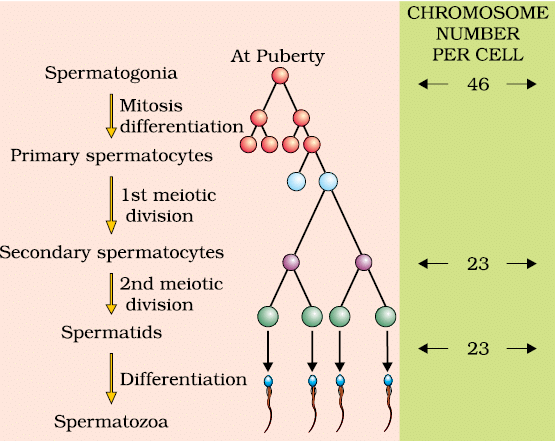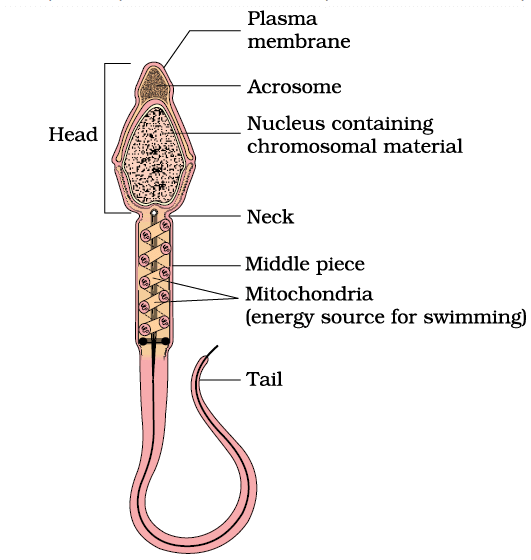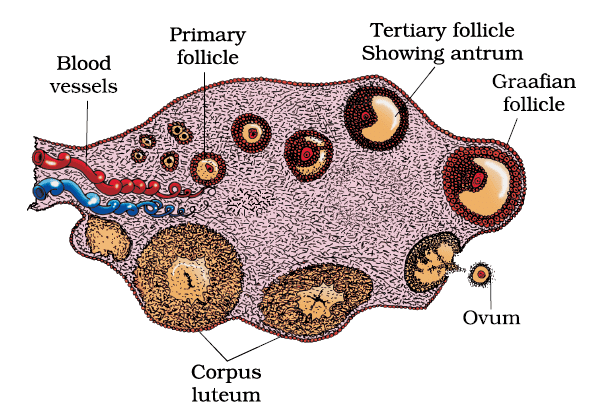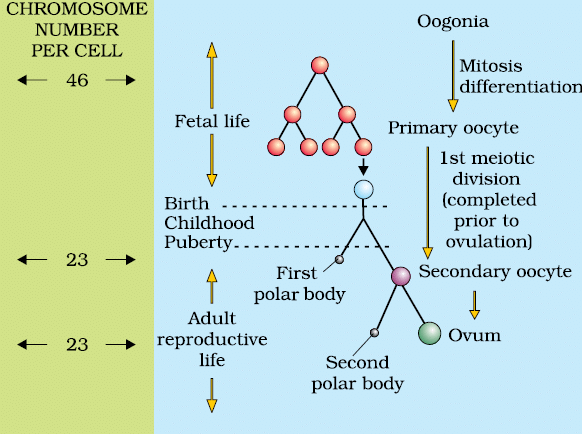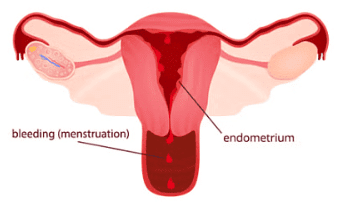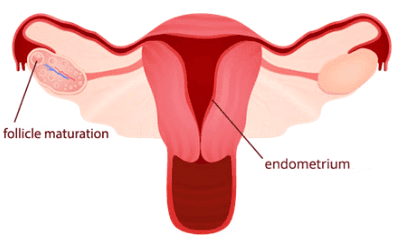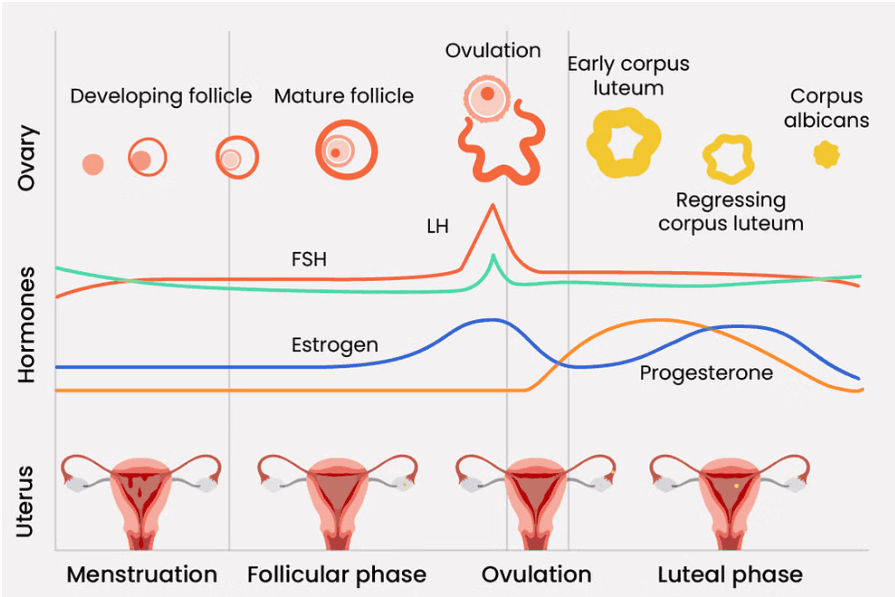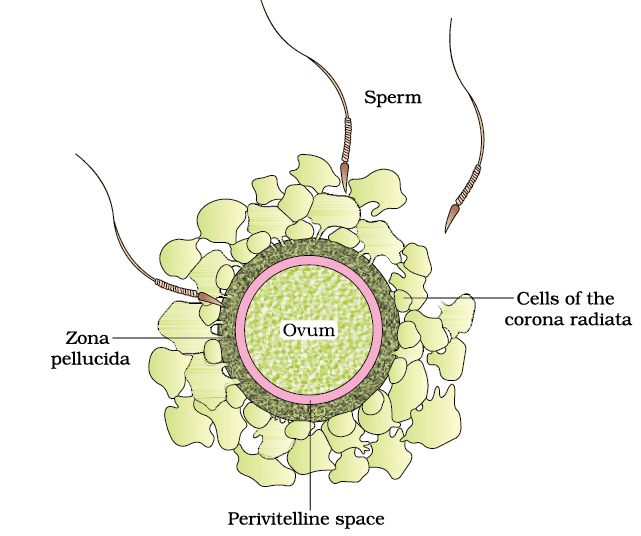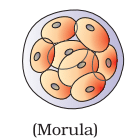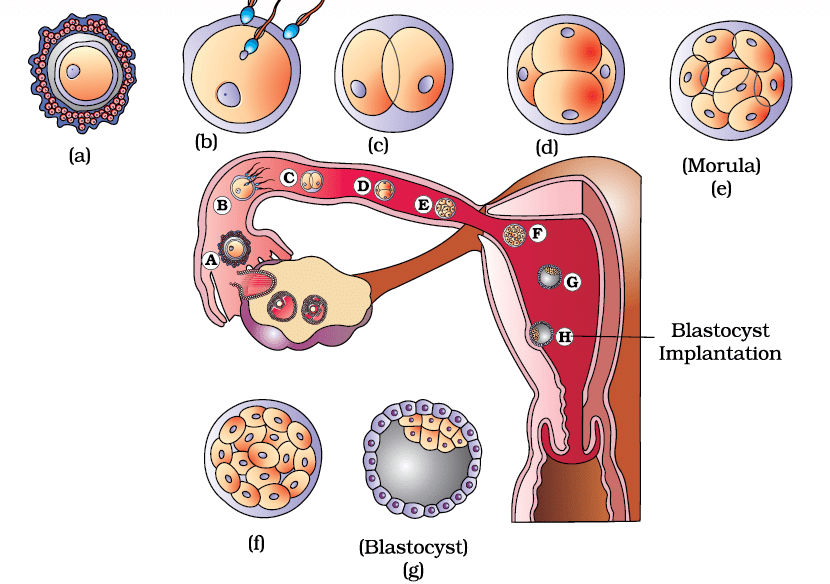|
Card: 1 / 84 |
What role does the scrotum play in the male reproductive system and why is its temperature regulation important for spermatogenesis? |
|
Card: 2 / 84 |
The scrotum holds the testes outside the abdominal cavity, helping to maintain a temperature that is approximately 2-2.5°C cooler than the body's internal temperature, which is crucial for the proper development and production of sperm during spermatogenesis.
|
|
Card: 4 / 84 |
Seminiferous tubules are tightly coiled structures located within the lobules of the testes, where sperm production occurs. They are lined with male germ cells, known as spermatogonia, which undergo meiosis to ultimately form sperm.
|
|
Card: 5 / 84 |
The male reproductive system consists of four main parts: testes, accessory ducts, glands, and ___. |
|
Card: 8 / 84 |
Sertoli cells provide essential nutrients and support to the germ cells during the process of sperm production. |
|
Card: 9 / 84 |
The interstitial spaces in the male reproductive system contain ___ cells that produce androgens. |
|
Card: 11 / 84 |
Describe the pathway sperm takes from the seminiferous tubules to the external urethral meatus. |
|
Card: 13 / 84 |
What are the primary functions of the secretions produced by the male accessory glands? |
|
Card: 14 / 84 |
The secretions provide energy for sperm through fructose, contain calcium and enzymes crucial for sperm function and mobility, and aid in lubricating the penis for sexual intercourse. |
|
Card: 15 / 84 |
The prostate gland plays a crucial role in ___ and ___ in the male reproductive system. |
|
Card: 18 / 84 |
The glans penis is the sensitive tip of the penis essential for sexual arousal, while the foreskin, a loose fold of skin, protects the glans and can be removed in a procedure called circumcision.
|
|
Card: 20 / 84 |
The primary functions include ovulation, fertilization, pregnancy, birth, and child care. |
|
Card: 21 / 84 |
Describe the structure and function of the oviduct in the female reproductive system. |
|
Card: 22 / 84 |
The oviduct, or fallopian tube, is 10-12 cm long and extends from the ovary to the uterus. It consists of three parts: the infundibulum, which has fimbriae to collect the ovum; the ampulla, which is the wider section; and the isthmus, which has a narrow lumen and connects to the uterus.
|
|
Card: 23 / 84 |
The uterus has three layers of tissue; name these layers and describe their significance. |
|
Card: 24 / 84 |
The three layers are the perimetrium (outer thin membrane), myometrium (middle thick smooth muscle layer that contracts during childbirth), and endometrium (inner glandular layer that undergoes cyclical changes during the menstrual cycle).
|
|
Card: 25 / 84 |
What are the primary structures involved in the secretion of milk within the mammary glands? |
|
Card: 26 / 84 |
The primary structures are alveoli, which secrete milk and store it in their lumens, and these open into mammary tubules that form a mammary duct leading to the lactiferous duct.
|
|
Card: 29 / 84 |
Hormonal control of spermatogenesis is initiated by an increase in ___ from the hypothalamus at puberty. |
|
Card: 32 / 84 |
GnRH stimulates the anterior pituitary gland to secrete luteinizing hormone (LH) and follicle-stimulating hormone (FSH), which are critical for the production of androgens and spermatogenesis. |
|
Card: 33 / 84 |
The head of a sperm contains a haploid nucleus and is covered by a structure called the ____, which is essential for fertilization. |
|
Card: 36 / 84 |
LH acts on Leydig cells to stimulate the synthesis and secretion of androgens, while FSH acts on Sertoli cells to promote the secretion of factors that aid in spermiogenesis. |
|
Card: 37 / 84 |
What are the stages of follicular development from primary to Graafian follicle in oogenesis? |
|
Card: 38 / 84 |
The stages of follicular development in oogenesis include: primary follicle (formed by primary oocyte surrounded by granulosa cells), secondary follicle (with more layers of granulosa cells and a theca layer), tertiary follicle (characterized by a fluid-filled cavity called the antrum), and Graafian follicle (where the secondary oocyte is surrounded by the zona pellucida).
|
|
Card: 39 / 84 |
During oogenesis, what is the significance of the unequal division that occurs during the first meiotic division? |
|
Card: 40 / 84 |
The unequal division during the first meiotic division results in a large haploid secondary oocyte, which retains most of the cytoplasm and nutrients, and a tiny first polar body, which may degenerate. This ensures that the ovum has sufficient resources for potential fertilization and early development.
|
|
Card: 41 / 84 |
Oogenesis begins in the fetal ovary with the formation of ___ that eventually develop into primary oocytes arrested in prophase-I. |
|
Card: 43 / 84 |
During which phase of the menstrual cycle does the shedding of the uterine lining occur? |
|
Card: 45 / 84 |
What hormonal changes occur during the follicular phase of the menstrual cycle, and what is their effect? |
|
Card: 46 / 84 |
During the follicular phase, levels of luteinizing hormone (LH) and follicle-stimulating hormone (FSH) increase, promoting the maturation of primary follicles into a Graafian follicle and stimulating the secretion of estrogen by the growing follicles.
|
|
Card: 47 / 84 |
Menarche represents the onset of ___, which typically occurs at ___ in human females. |
|
Card: 49 / 84 |
What triggers the ovulatory phase in the menstrual cycle, and what is the significance of this event? |
|
Card: 50 / 84 |
The rapid increase in LH, known as the LH surge, triggers the rupture of the Graafian follicle and the release of the ovum, marking the ovulatory phase, which is crucial for potential fertilization. |
|
Card: 51 / 84 |
During the luteal phase, what transformation occurs in the Graafian follicle, and what role does the corpus luteum play? |
|
Card: 52 / 84 |
Following ovulation, the Graafian follicle transforms into the corpus luteum, which secretes large amounts of progesterone essential for maintaining the endometrium and supporting implantation of a fertilized egg. |
|
Card: 53 / 84 |
If fertilization does not occur, what happens to the corpus luteum and how does this affect the menstrual cycle? |
|
Card: 54 / 84 |
If fertilization does not occur, the corpus luteum degenerates, leading to the breakdown of the endometrium and the onset of menstruation, signalling the start of a new menstrual cycle.
|
|
Card: 56 / 84 |
The zona pellucida prevents additional sperm from entering the ovum after the first sperm has fused with it, ensuring that only one sperm can fertilize the ovum.
|
|
Card: 57 / 84 |
The fusion of the haploid nuclei from the sperm and ovum leads to the formation of a ___ which has a diploid chromosome number. |
|
Card: 60 / 84 |
The sex of the baby is determined by the combination of sex chromosomes contributed by the sperm and ovum; female gametes carry an X chromosome while male gametes carry either an X or a Y chromosome, resulting in XX for females and XY for males. |
|
Card: 62 / 84 |
The morula stage represents a solid ball of 8 to 16 blastomeres formed by mitotic divisions of the zygote, which is crucial for further development into the blastocyst.
|
|
Card: 63 / 84 |
The trophoblast layer of the blastocyst is primarily responsible for ___ during implantation. |
|
Card: 64 / 84 |
attaching to the endometrium of the uterus, facilitating the embedding of the blastocyst. |
|
Card: 65 / 84 |
Describe the process that follows the attachment of the blastocyst to the uterine lining. |
|
Card: 66 / 84 |
After attachment, the uterine cells undergo rapid division to cover the blastocyst, a process known as implantation, which is essential for establishing pregnancy.
|
|
Card: 68 / 84 |
Chorionic villi interdigitate with uterine tissue to form the placenta, facilitating the exchange of essential substances between the mother and the embryo. |
|
Card: 69 / 84 |
The placenta acts as an endocrine organ by producing several hormones. Name two of these hormones and their functions. |
|
Card: 70 / 84 |
Two hormones produced by the placenta are human chorionic gonadotropin (hCG), which helps maintain pregnancy, and human placental lactogen (hPL), which regulates metabolism.
|
|
Card: 71 / 84 |
During pregnancy, hormonal changes lead to an increase in levels of various hormones in maternal blood. Name two hormones that increase and describe their significance. |
|
Card: 72 / 84 |
Cortisol and prolactin are two hormones that increase during pregnancy; cortisol is important for managing stress and metabolism, while prolactin is crucial for milk production and maternal behavior. |
|
Card: 73 / 84 |
What are the three primary germ layers formed during embryonic development, and what does each layer give rise to? |
|
Card: 74 / 84 |
The three primary germ layers are ectoderm, endoderm, and mesoderm. The ectoderm develops into tissues such as skin and the nervous system, the endoderm forms internal organs like the digestive and respiratory systems, and the mesoderm gives rise to muscles, bones, and the circulatory system. |
|
Card: 76 / 84 |
Oxytocin is a hormone released from the maternal pituitary gland that plays a crucial role in parturition by acting on the uterine muscles to induce stronger contractions. Its release creates a positive feedback loop that intensifies uterine contractions, facilitating the expulsion of the baby through the birth canal. |
|
Card: 77 / 84 |
Parturition is triggered by signals from the fetus and placenta that induce ___ contractions known as the fetal ejection reflex. |
|
Card: 80 / 84 |
Colostrum is the milk produced in the initial days of lactation, rich in antibodies essential for developing the newborn's immune resistance. |
|
Card: 81 / 84 |
During pregnancy, the mammary glands undergo differentiation to prepare for ___ and ___ production. |
|
Card: 83 / 84 |
What are the benefits of breastfeeding during the early period of infant growth? |
|
Card: 84 / 84 |
Breastfeeding helps ensure the healthy development of the baby by providing essential nutrients and antibodies. |
 Completed! Keep practicing to master all of them. |




